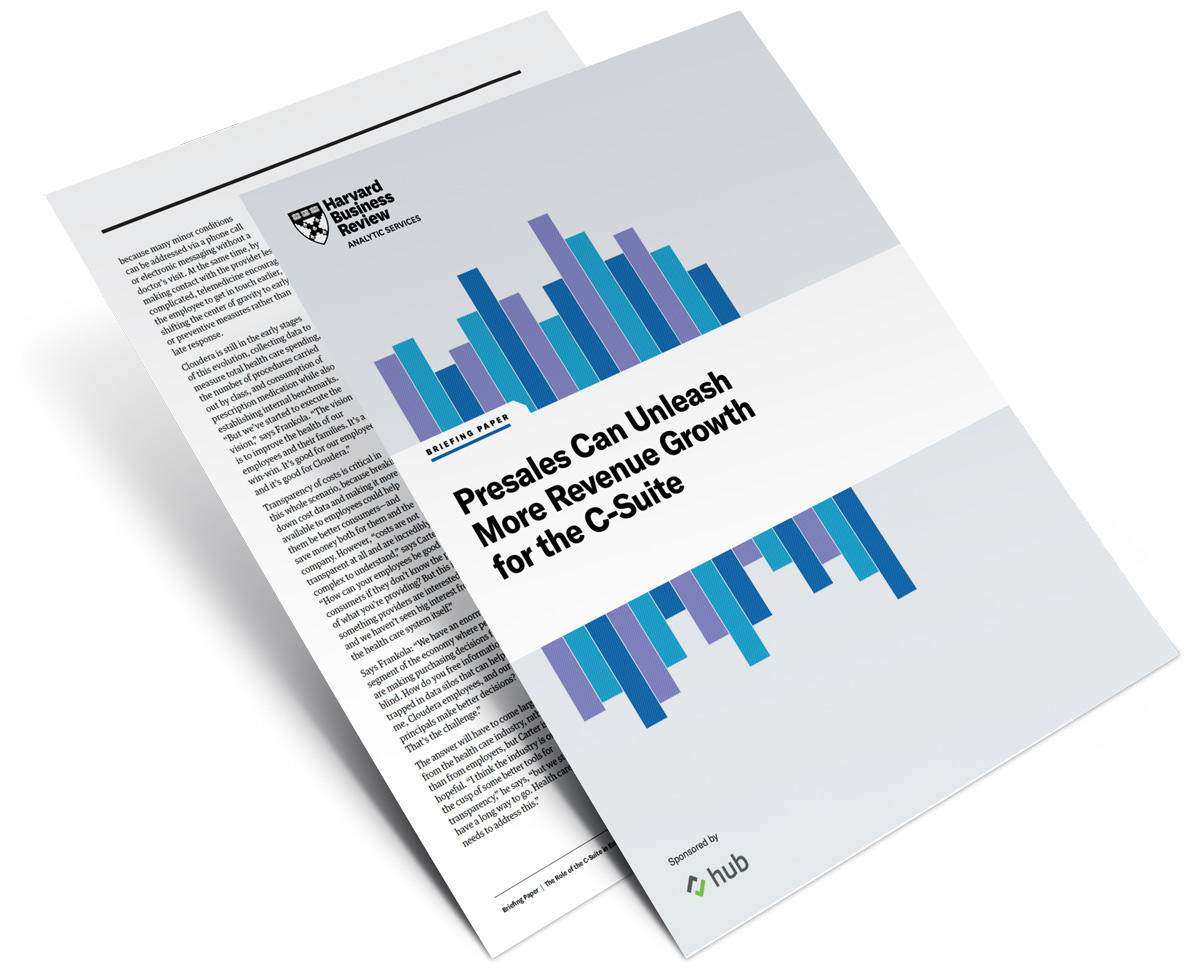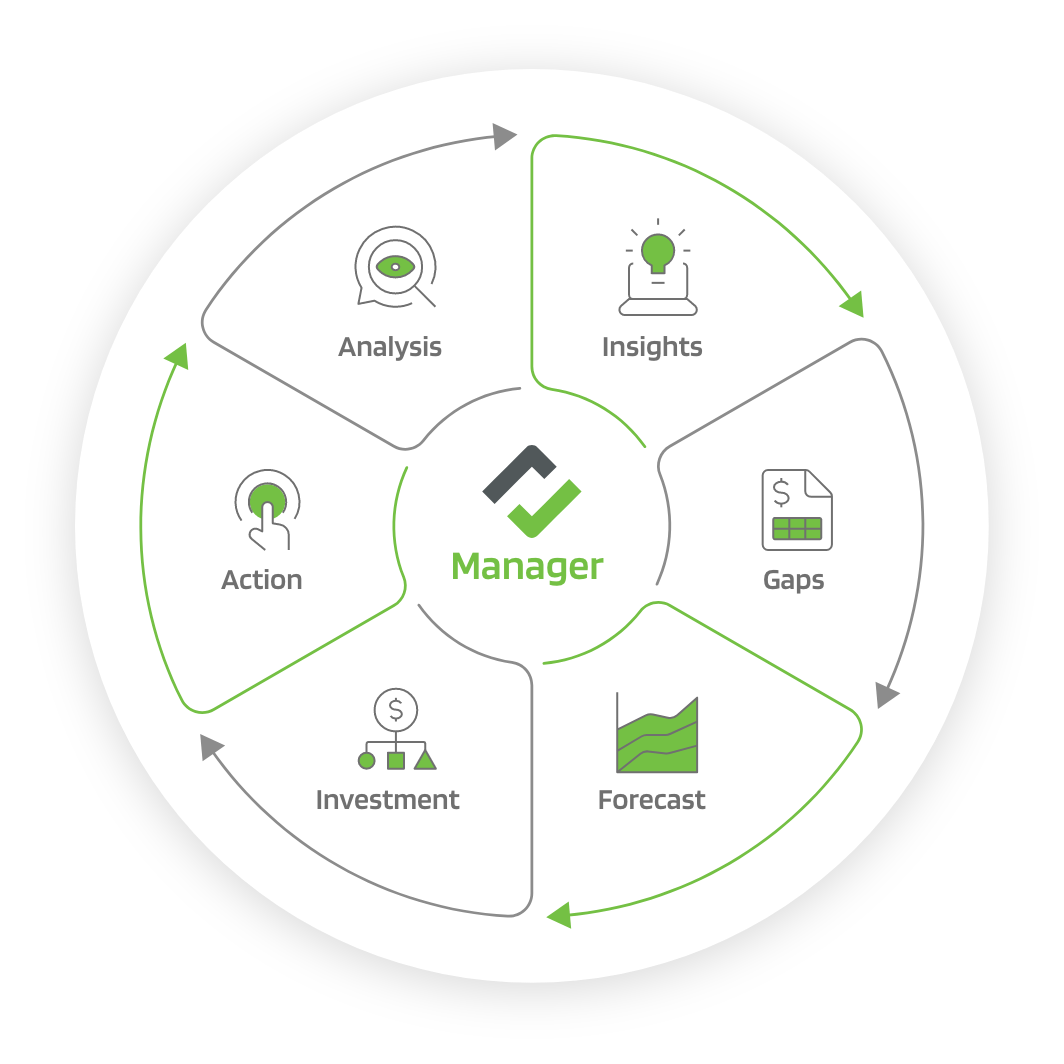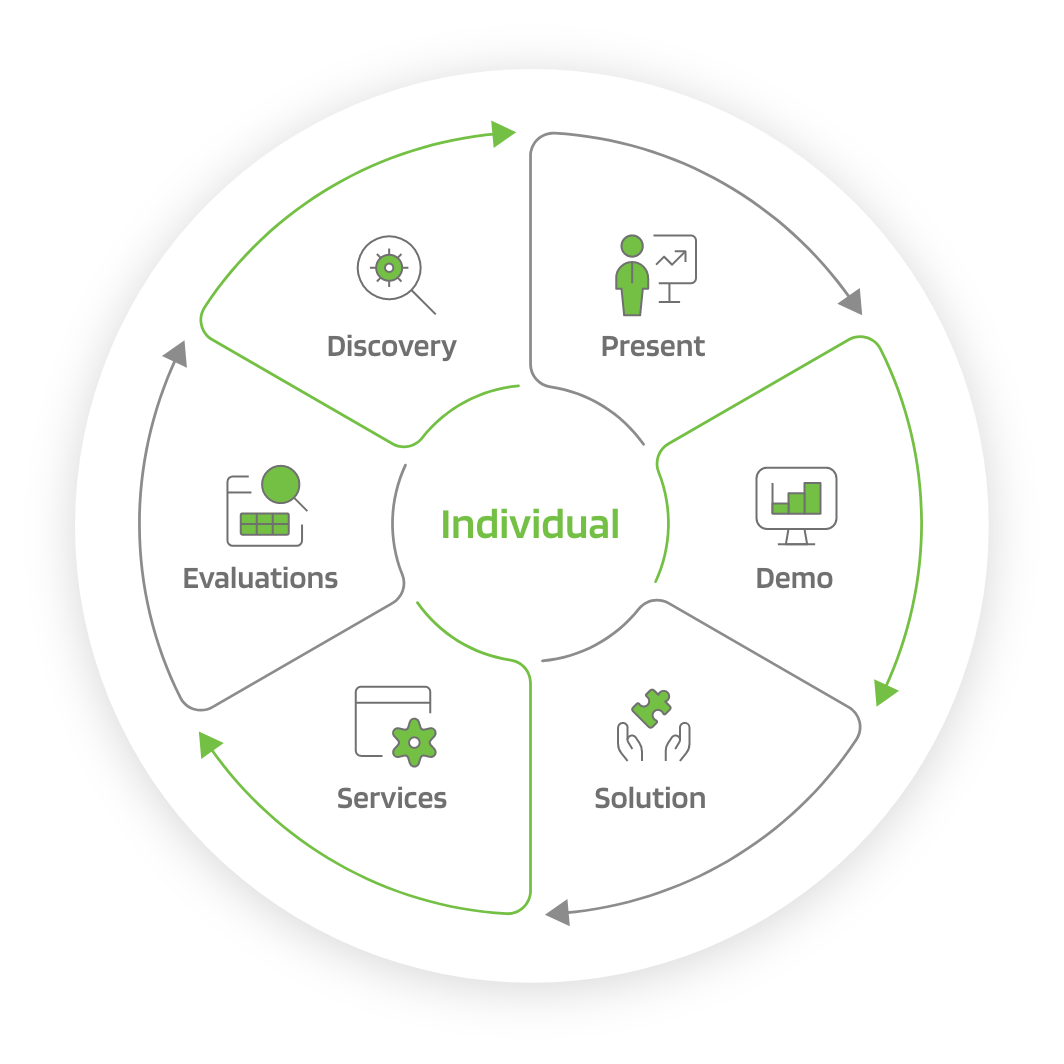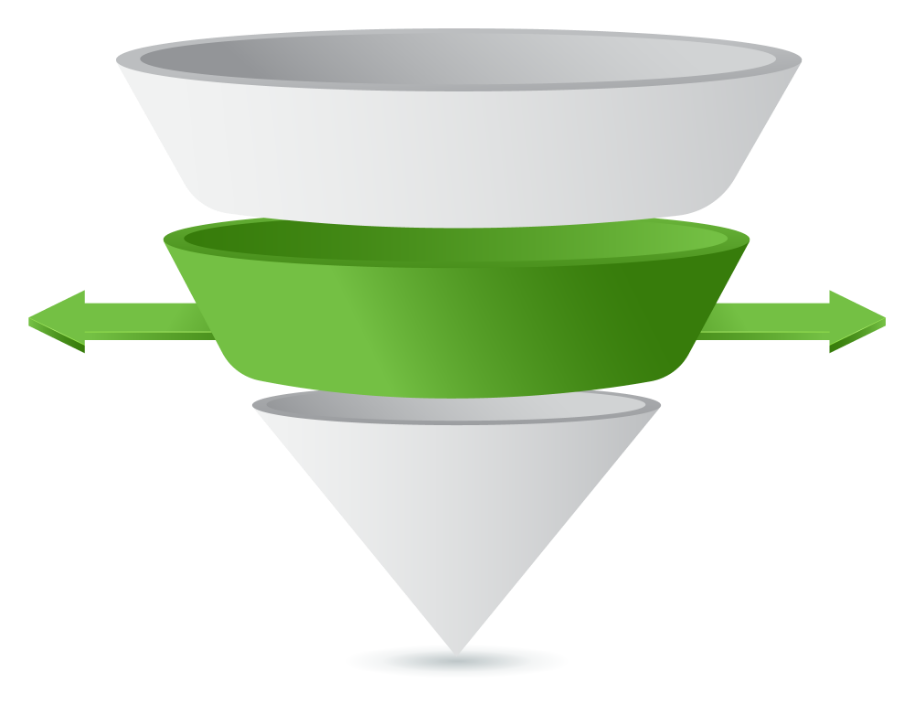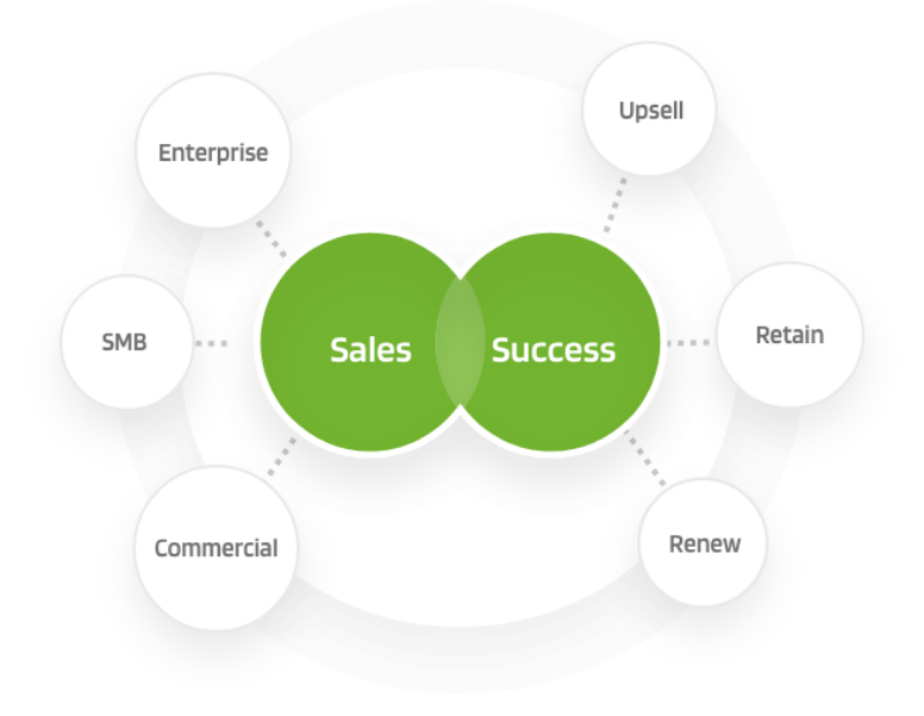
Technical Sales by Hub
The Key to a Presales Budget: Showcase the Value Internally

Presales and sales engineering professionals have historically made do with generic tooling, like spreadsheets and customer relationship management (CRM) systems. They’ve also received minimal training, hiring budget, and little to no budget to develop and refine processes that are dynamic and customized to winning formulas.
If you ask most board members and the C-suite, such as the CEO, chief financial officer (CFO), chief revenue officer (CRO) and chief customer officer (CCO), what presales does day to day, few can provide a solid answer. They lack an understanding of how presales and sales engineering professionals contribute to growth and what leverage they have on the top line. Senior leaders are also unaware of how instrumental presales is to building the company’s enterprise value, and what influence sales engineering professionals have on internal stakeholders, like product management and customer success, and external stakeholders, like partners and prospects.
Now is the time to change the value perception of presales within the company. As the old saying goes, “perception is reality” and the reality is that presales has historically done a poor job in educating others internally about what they do on a day-to-day basis, because, ironically, they have been focused on their day-to-day work activities.
But I would argue that advocating for how presales and sales engineering add value to the company is part of the job. And there’s no better time than the present to begin that campaign within your organization.
Mapping Your Value – For Any Growth Strategy
Why now? Well, why not? Remote selling, growing technical complexity and the proliferation of product packages moving to the cloud as software as a services (SaaS) offerings puts the spotlight on presales. These days, public and private company board members and the C-suite are asking themselves what areas within their sales funnel, both for net new and existing base, they can optimize. Plenty of investments and attention have been placed upon growth initiatives led by marketing, sales and product, but regardless of the growth strategy, they all rely on some aspect of presales or sales engineering to scale.
Let’s look at a simple framework to see what role and value presales has in three distinct types of growth strategies, which can sometimes co-exist within one company:

Let’s explore each of these in a bit more detail:
- Marketing-Led Growth (MLG) – When marketing is responsible for 75%+ of opportunities generated to drive growth. Some companies can start with this strategy, while others eventually get to invest more in this strategy as they broaden their go-to-market initiatives.
- Sales-Led Growth (SLG) – When sales focuses on a market segment and/or persona and can be responsible for 75%+ of opportunities. In this case, sales will proactively reach out to these prospects and partner with marketing to reinforce demand generation to key markets.
- Product-Led Growth (PLG) – When the product, typically offered for free or as open source, targets a given community and gains adoption with little sales friction. This approach can lay the foundation to expand into SLG and MLG growth strategies.
Whether your company has an MLG, SLG, PLG or a combination of any of these strategies, a presales engineer and sales engineering professionals play a key role. While they do help expand TOF and BOF activities, their primary value add can be recognized within MOF technical sales activities.
As a presales engineer, it’s your job to ensure that the rest of the organization understands your value rather than taking your contributions for granted. When senior leaders comprehend what your team brings to the table, they’ll make the right-sized investments in presales vs. over-funding marketing or sales. You’ll secure the presales budget you need to be more effective and ultimately help the company drive greater success.
Now let’s look at how you can secure the sales engineering and presales budget you need.
Get Your Presales Budget by Using Art and Science
Effectively securing funding for a department is part art and part science. The art encompasses telling a story and showing the art of the possible. It requires:
- understanding what your C-suite audience cares about
- mapping what you do to what they care about
- educating your audience on what you do and how you do it
You’re essentially running a political campaign on two fronts. The first is to get senior leader sponsorship when budgets are put together. The second is to show value throughout the year on return on investment (ROI) from investments in presales, which should be comparable to investing in other areas of the revenue and go-to-market supply chain. When requesting a budget, be sure to focus not only on the expense, but also on the growth and top line that presales and sales engineers support.
The science plays a key role, too, during initial budget and ongoing operational reviews of key performance indicators (KPIs). These reliably measure efficiency and ROI and ensure that the presales business is being run effectively.
As you map ROI dollars invested in people (hiring training), processes (methodologies, playbooks) and systems (automation, presales productivity tooling), the science — your data —will show how your presales business is driving top line, positively influencing productivity, narrowing features gaps, and improving contribution margin to the enterprise.
Getting key metrics can be highly challenging and requires data-wrangling when using spreadsheets and a general-purpose customer relationship management (CRM) system. However, you can obtain greater real-time telemetry when you use a presales productivity platform that provides an out-of-the-box set of KPIs on the business without imposing the burden of data wrangling on leadership or data entry on individual contributors.
Investing in a purpose-built system that captures all the presales daily activities without over-relying on a CRM system will give you the baseline to help you monitor and manage your business. And it will bring science and data to your ongoing presales budget discussions with the C-suite.
Educate the C-Suite and Ask for What You Need
There is an old saying that applies to presales, “Understand and educate before you ask, and ask with data.”. It is important to understand how your company views its growth among MLG, SLG and PLG. You may be at a company that has historically reached a tremendous amount of success starting with PLG and now is shifting to an SLG and MLG sales motion without having internalized or understood what that means exactly. So analyze what has driven your company’s success and educate your C-suite on the role presales plays across all three growth strategies.
Additionally, it is important to portray the art of the possible. Connect the dots on the growth that presales enables and the sales stages it adds value to regardless of MLG, SLG or PLG.
Lastly, when making requests for people, processes or systems to help presales be more effective and productive, bring whatever data you have to the discussion. Over time you will amass the additional data you need — ideally with a presales productivity platform that can minimize your data wrangling efforts — and give you real-time telemetry on the health of your presales business.
Now is the time for presales to capitalize on the macro trends of remote selling, growing technical complexity, and the proliferation of cloud packaging that rely more on presales than ever before. Understand, educate and ask for what you need. You may just get it.
